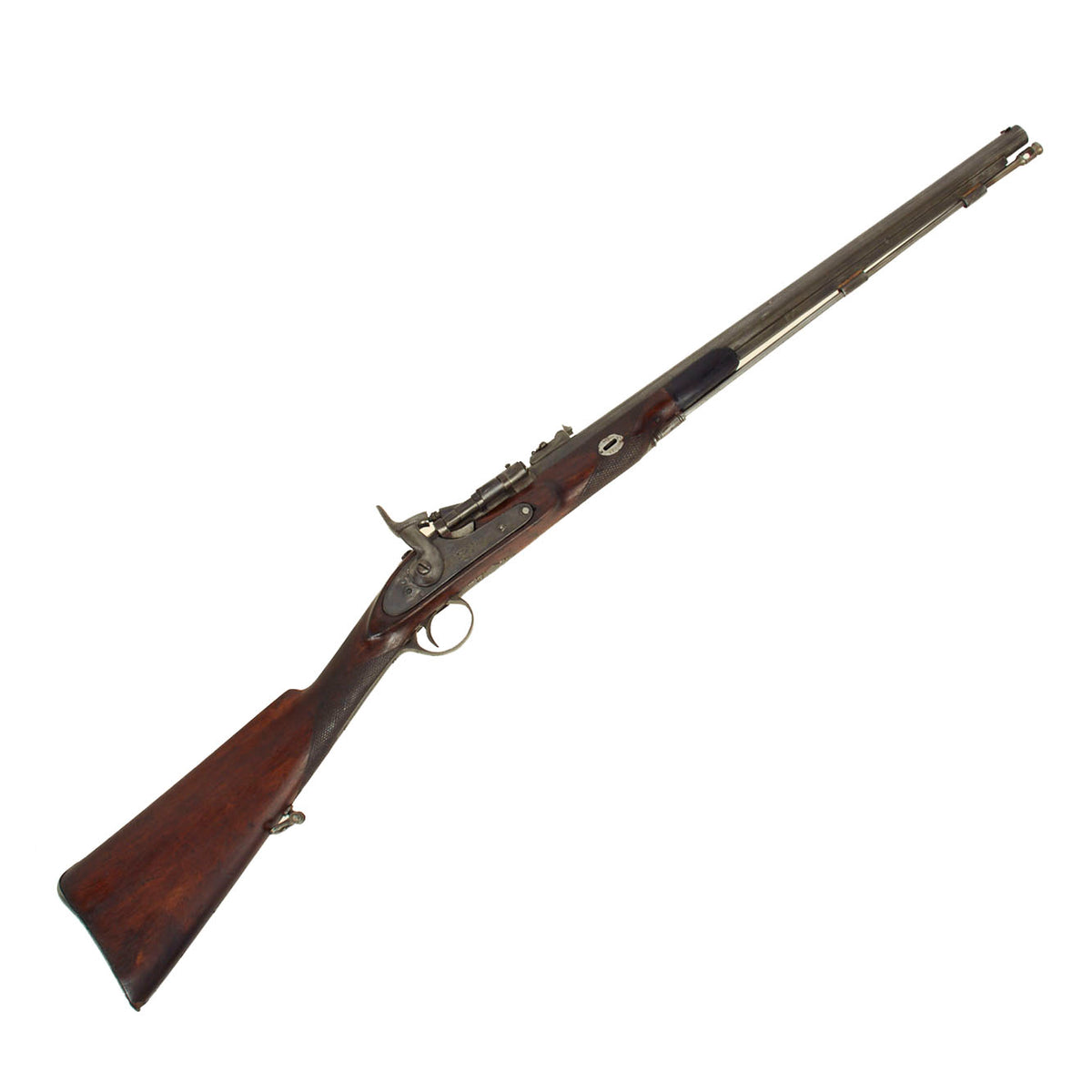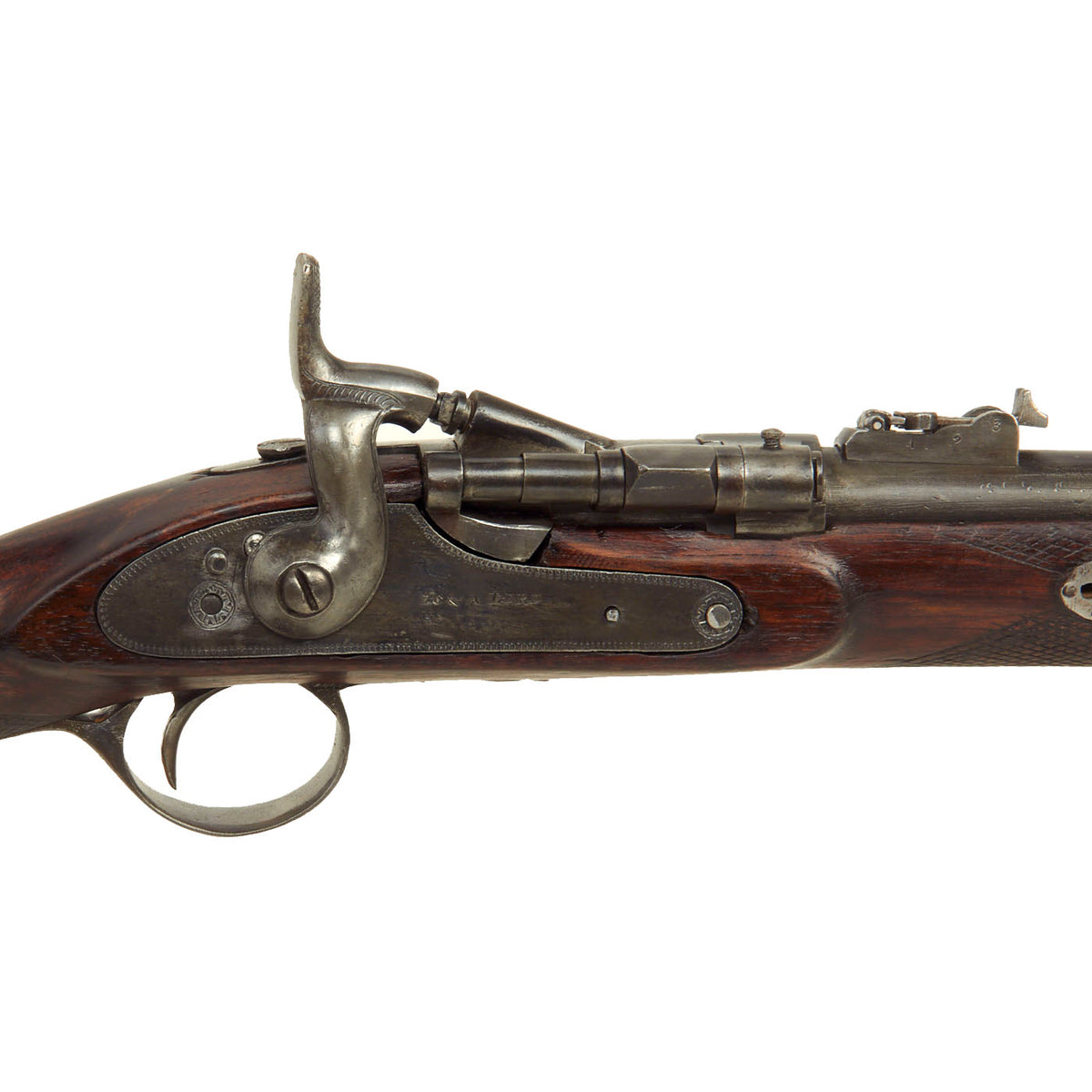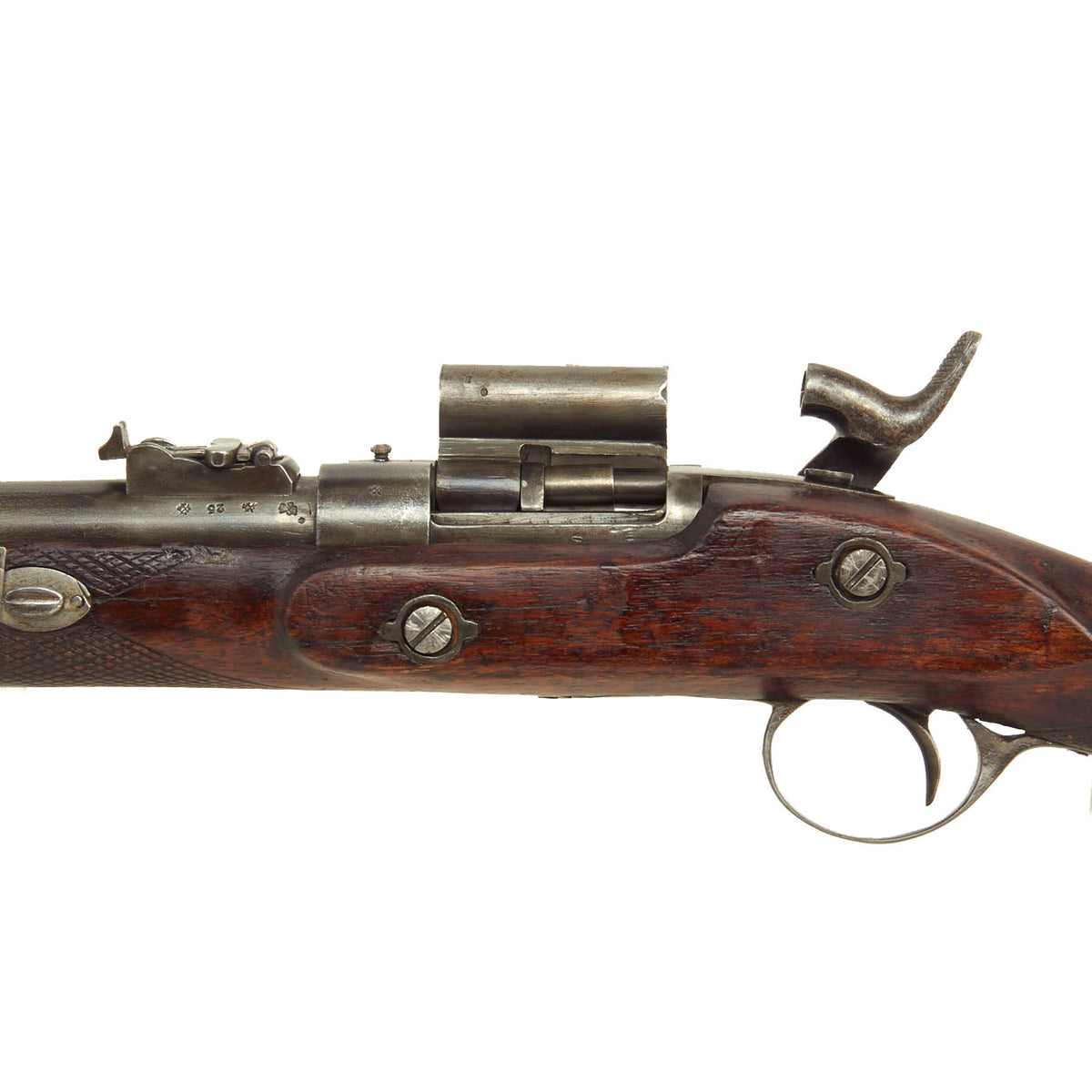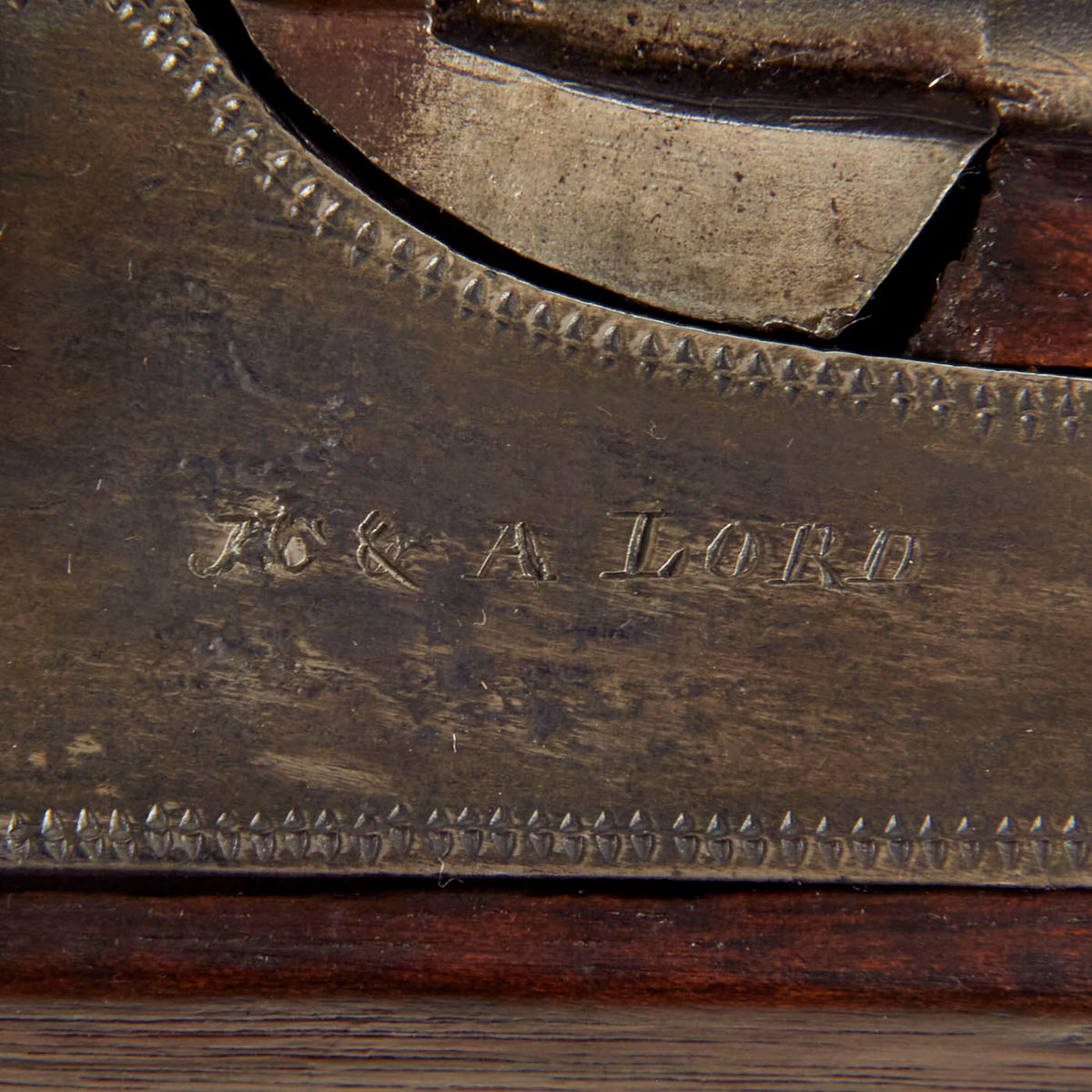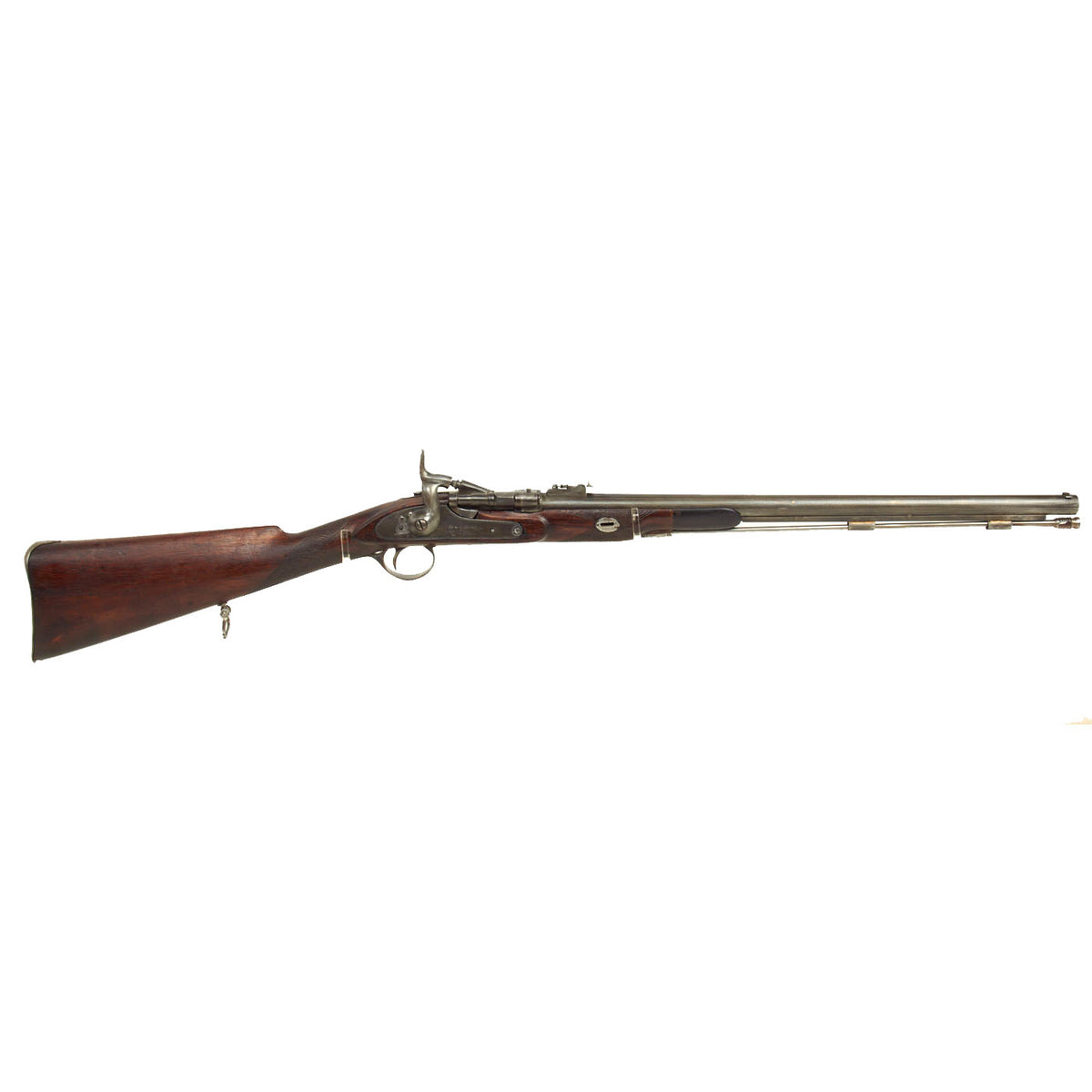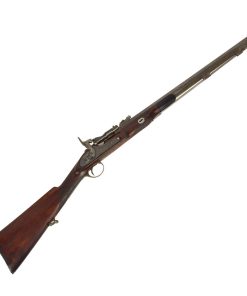Original British Snider Mk.II Cavalry Carbine by J.C. & A. Lord from the Nepalese Royal Bodyguard Original Items
$ 1.795,00 $ 448,75
Original Item: Only One Available. Made in England, this is an unusual second model Snider System carbines in .577 cal. The only Cavalry in the Royal Nepalese Gurkha Army was “The Royal Bodyguard” which would certainly account for the fact that so few Cavalry Carbines were discovered in the old Palace. Of very interesting construction, this Snider Carbine is half stocked with checkering on both wrist and forearm. The furniture is all steel and bears some line engraving, indicating custom manufacture.
The lock plate is marked J.C. & A. LORD on the lock plate, and has a longer manufacturer marking on the barrel, which is somewhat faint:
J.C. & A. LORD. LONDON, BIRMINGHAM & BOMBAY
The barrel bears British Proof Marks indicating Birmingham manufacture. These include the CROWN / CROSSED SCEPTERS / B P C proof marking and CROWN / CROSSED SCEPTERS / V “viewed” markings, as well as the CROWN / BP proof for black powder gun barrels. It is also marked 25, indicating the a “25 gauge” bore of about .571″. Additionally, the breech block is marked SNIDER / PATENT around the S Arrow marking, which is also found on the chamber ring. This carbine has closest to the MkII** action, with the small button at the bottom of the breech plug to retain the block.
Complete with all steel ram rod and sling swivel, the carbine has a 21 1/2″ barrel and is 39 1/2″ overall. The bore has five groove rifling, which has a mostly bright finish showing lands and grooves. They are a bit faint though, indicating that this carbine saw significant use while in service. The lock holds correctly at half cock, firing at full cock. There is however some damage to the firing pin retainer. The rear sling swivel is present and functional, and it does not look like this carbine ever had a front swivel. The rear sight is present, however the sight leaf has been replaced with one bearing Nepalese numerals.
The stock on this example is in very good condition, though it definitely does show wear from use. There is some cracking on the left side, and the front 2 inches of the stock look to have been replaced. There is also a grafted on repair on the toe of the butt stock. However, in spite of all the use, the checkering on the wrist is still in great shape, and the wood stock does have a lovely color.
A truly interesting carbine variation, custom built almost certainly for the “Royal Bodyguard”. Very hard to find, ready to display!
Specifications:
Year of Manufacture: circa 1866
Caliber: .58 inches
Ammunition Type: .577 Centerfire Cartridge
Barrel Length: 21 1/2 inches
Overall Length: 39 1/2 inches
Action: Side Action Lock
Feed System: Side Hinge Rotating Breech block
NOTE: International orders of antique firearms MUST be shipped using UPS WW Services (courier). USPS Priority Mail international will not accept these. International customers should always consult their country’s antique gun laws prior to ordering.
History of the Snider rifle– Jacob Snider, an American from New York, developed this breech loading system for the P-1853 Enfield, the most prolific imported Percussion rifle in use by both the North and South during the U.S. Civil War. When the British Board of Ordnance appointed a Select Committee in 1864 the Snider system was swiftly adopted with the first breech loaders being issued in 1865 to British forces.
Improved in 1867 by the use of Colonel Boxer’s center fire brass bodied cartridge, the rifle was used very effectively in the Abyssinian Campaign of 1868. The system utilized a hinged breech block with an internal firing pin assembly that permitted the use of a self contained cartridge of lead bullet in cardboard, and, after 1867, brass casing. This highly efficient conversion system prolonged the active life of the P-1853 rifles up until 1871 when the Martini System was adopted. Snider rifles saw continued use throughout the Empire but were officially obsoleted by the late 1880s.
Fast Shipping with Professional Packaging
Thanks to our longstanding association with UPS FedEx DHL, and other major international carriers, we are able to provide a range of shipping options. Our warehouse staff is expertly trained and will wrap your products according to our exact and precise specifications. Prior to shipping, your goods will be thoroughly examined and securely secured. We ship to thousands clients each day across multiple countries. This shows how we're dedicated to be the largest retailer on the internet. Warehouses and distribution centres can be located throughout Europe as well as the USA.
Note: Orders with more than one item will be assigned a processing date depending on the item.
Before shipping before shipping, we'll conduct a thorough inspection of the items you have ordered. Today, the majority of orders will be delivered within 48 hours. The delivery time will be between 3-7 days.
Returns
The stock is dynamic and we cannot completely manage it because multiple stakeholders are involved, including our factory and warehouse. So the actual stock may alter at any time. It's possible that you may not receive your order once the order has been made.
Our policy is valid for a period of 30 days. If you don't receive the product within 30 days, we are not able to issue a refund or an exchange.
You can only return an item if it is unused and in the same state as the day you received it. You must have the item in its original packaging.
Related products
Uncategorized
Uncategorized
Uncategorized
Uncategorized
Uncategorized
Uncategorized
Uncategorized
Uncategorized
Band of Brothers ORIGINAL GERMAN WWII Le. F.H. 18 10.5cm ARTILLERY PIECE Original Items
Uncategorized
Uncategorized
Uncategorized
Uncategorized
Uncategorized
Uncategorized
Armoured Fighting Vehicles of the World: AFVs of World War One (Hardcover Book) New Made Items
Uncategorized
Armored Burgonet Helmet & Polearm from Scottish Castle Leith Hall Circa 1700 Original Items
Uncategorized
Uncategorized
Australian WWII Owen MK1 Machine Carbine SMG Custom Fabricated Replica with Sling Original Items
Uncategorized
Uncategorized
